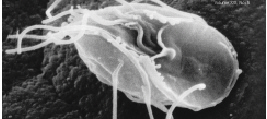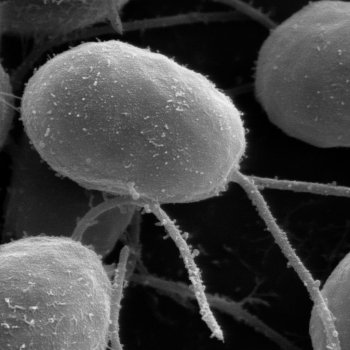 username@email.com
username@email.com
In this lesson, we will review the fundamental unit of life, the cell. We will cover the different types of cells, how they work, and cover some of the basic parts of each type of cell.
We reviewed the important biomolecules and went over their roles in living organisms.
Antonie van Leeuwenhoek made his living selling cloth, but this 17th-century Dutchman could not resist his interest in making lenses. His obsession with making a perfect lens drastically reduced the income he derived from his neglected business, yet he labored on. In 1675, he produced a single lens that, when mounted in a metal frame, could magnify an object up to 270 times. With his apparatus, an early microscope, Leeuwenhoek was able to see numerous protozoans in a drop of water. He called these microscopic creatures animalcules, or little animals. His fame grew as he proceeded to identify various bacteria and, most notably, spermatozoa, which he identified from humans and other animals.
Antonie von Leeuwenhoek was the first scientist to identify
B is the correct answer. Choices A and D are incorrect because they were identified by Robert Hooke in 1665. The first virus (tobacco mosaic) was not identified until 1898 by Martinus Beijerinck.
Earlier, in 1665, Robert Hooke, an English physicist and mathematician, peered into his homemade microscope–one of the world’s first–to examine the bark of a cork tree. Hooke saw the tiny boxes that make up cork tissue, which reminded him of monks’ cells. So, Hooke called the minute structures cells.
Though Hooke termed cells, it was not until 1838 that Matthias J. Schleiden, a German botanist, recognized the significance of cells and elucidated the beginnings of cell theory. In 1839, he and Theodore Schwann, a German scientist, stated that cells are “the elementary particles of organisms,” both plant and animal, and that some organisms are unicellular while others are multicellular. Nine years later, another German botanist, Hugo von Mohl, coined the word protoplasm to designate a cell’s living material. Cell theory was further advanced by the discovery of the nucleus by Robert Brown in 1833 and the confirmation of its presence in both plant and animal cells.
For a decade, scientists attempted to track down the origin of cells. The then widely believed but fanciful “free cell hypothesis” stipulated that cells arose mysteriously from a formless vaporous substance. Though cell division had been observed among unicellular organisms, it was not until 1855 that anyone presented a cogent idea of cell origin. In that year, Rudolf Virchow, a German biologist, stated cell theory unequivocally: “cells come from cells.” In other words, cells reproduce themselves.
Cell theory states that
The correct choice is D. The union of a sperm and egg to form an embryo is the domain of reproductive biology, so choice A is incorrect. Choice B is incorrect because all cells do not have a nucleus that is enclosed in a membrane (see prokaryotes). The processes and functions of cell metabolism are not part of cell theory; therefore choice C is not correct.
So, what is a cell? Biologists today define it as the smallest unit of life that makes up all living things. A single cell, such as a bacterium, may be a complete, independently functioning organism. In multicellular organisms, cells may be adapted to perform specific functions within tissue and may not be capable of existing independently of that tissue.
There are two basic types of unicellular organisms: heterotrophs and autotrophs.

Giardia: a heterotrophic organism that can cause gastrointestinal distress in humans

Chlamydomonas is an autotroph, making its own food through photosynthesis
Improvements in instrumentation, such as the electron microscope, have allowed scientists to observe and analyze the structure and components of cells and the functions each performs. Observation and analysis shows that both animal and plant cells share some common characteristics of form and function.
Cells are usually between 10 and 30 micrometers in diameter. Size is limited primarily by the relationship of surface to volume. Cells survive by exchanging materials with their environment through their outer membrane; if cell volume increases too much, surface area would decrease, and material exchange through the membrane would be so impaired the cell would not survive.
Phagocytosis is the process in which
The correct answer is A. Heterotrophs are organisms that eat other organisms, and phagocytosis is the process of engulfing prey items. Phagocytosis does not refer to forms of locomotion. The theory that cells arose from undifferentiated material was debunked by cell theory. Choice D is incorrect because the generation of protoplasm is not part of phagocytosis.